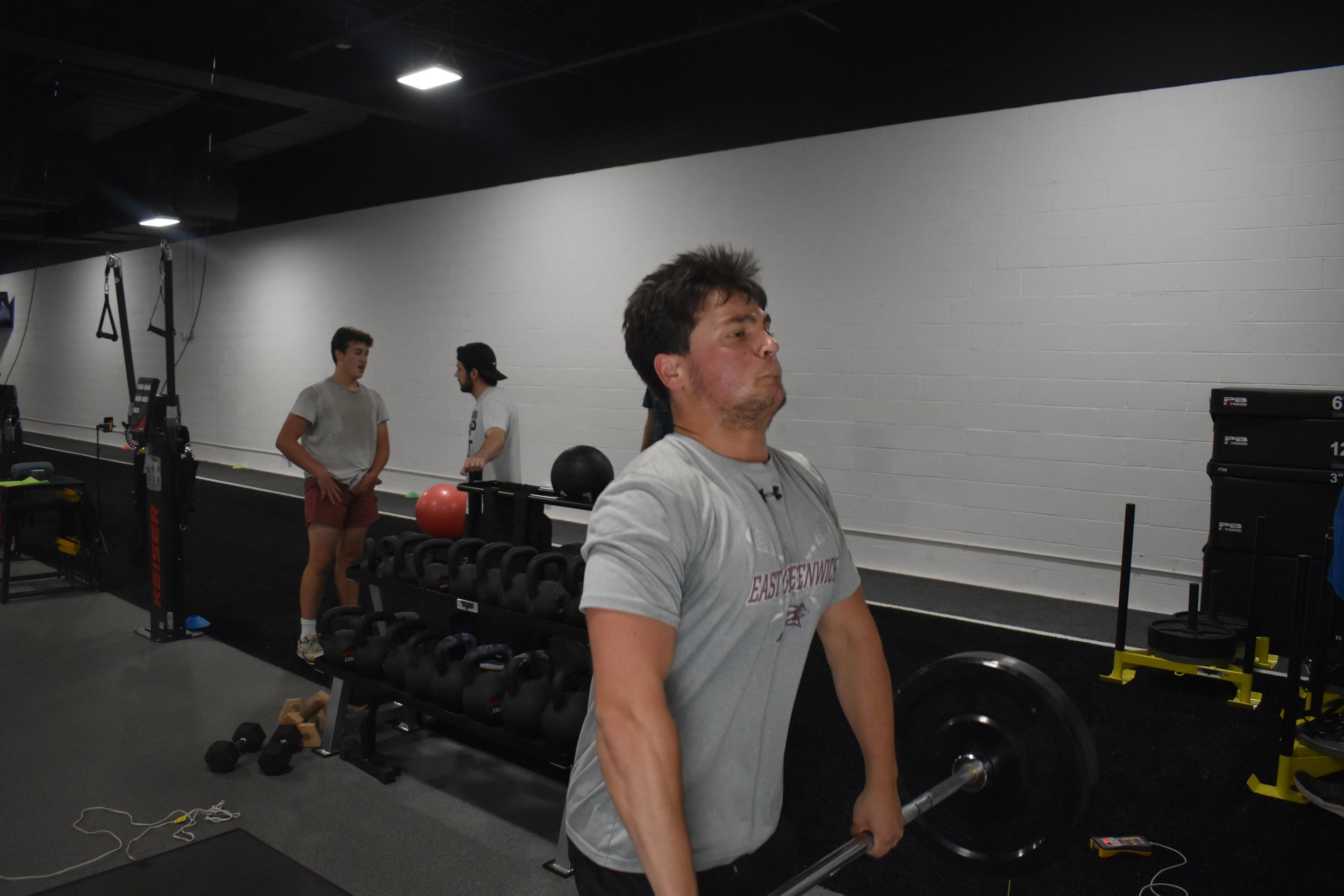How We Train Athletes At DMPFIT
Participating in a sports performance program has become a must-do for athletes wanting to be competitive on the playing field and possibly continue their sport in college. Signing up for the right program can be a challenge with so many options available. We believe that at DMPFIT we’re offering the best service for our athletes to prepare for their sport as well providing important tools and strategies that they’ll use for the rest of their lives.
For basic info about how we train our athletes at DMPFIT, keep reading.
Training Cycles
At DMPFIT, we break our training down into 4-week cycles. Each cycle has a theme in which athletes are working on specific qualities to improve athletic performance (muscle building, strength, speed, etc). There are 13-cycles at DMPFIT which increase in difficulty as you progress through the program.
Is it a one size fits all approach?
No. Although many sports performance programs have overlap (Sprints, Jumps, Deadlifts, Bench Press, etc.) each athlete will have their own unique training plan based on their sport and capabilities.
Here’s what that might look like :
Different Exercises : Distance runners are taught how to Deadlift but once they’re able to deadlift their body-weight, they start focusing on single-leg, hip and core exercises to reduce injury risk and improve running economy.
Off-Season/In-Season : Our football program will focus mainly on lifting heavy weights to get stronger during the off-season when they have the most time to recover between sessions. As the season gets closer our training transitions to faster and more explosive exercises to prepare for the speed of game action. During the season, we primarily focus on preserving strength and power while dedicating more time to recovery exercises so they’re prepared for the next game.
Sport-Specific Correctives : Some movements we want to learn to improve a skill in our sport, but sometimes our sport leads to undesirable asymmetries or over-use patterns that need to be corrected or avoided. We program corrective exercises using assessments made during our warm-up to address these potentially risky movement patterns. We also communicate with a network of physical therapists to ensure athletes are performing the right exercises at the appropriate time.
New athletes vs. experienced athletes
New Athletes (General Physical Preparedness)
Although we often have parents sign their kids up to start “sport-specific” training immediately, it’s important to communicate that their program will be pretty standard at the start, regardless of their sport. This is because we need to take some time to not only teach our athletes how to move properly, but we also need to learn from them too.
How do they move?
What do they do well or not so well?
How do they like to be coached?
For new athletes, the first 12-weeks (3-cycles) of training is called General Physical Preparedness (GPP). During this time athlete’s will learn how to move efficiently and will gradually gain strength as the workouts get more challenging.
Here’s what that might look like :
Sprints & Jumps
Fundamental strength exercises (Deadlift, Squats, Push-Ups, Chin-Ups, etc.)
Fundamental conditioning (Running, Biking & Slideboard)
Experienced Athletes (Continuing Athlete Program)
Once an athlete has completed the 12-week GPP program, we can begin challenging them with more advanced movements. During these sessions athletes may be more complicated movements, lifting weights at higher intensities or integrating sport-specific skills into their routine.
Here’s what that might look like :
Sled Sprints
Olympic Lifts (Hang Clean and Hang Snatch)
Velocity Based Training (i.e. moving a weight at a target speed)
Goal Setting
At the start of each season (winter, spring, summer & fall) all of our athletes get color coded Goal Sheets stapled to the top of their training packet . On every goal sheet is a goal for school, sport & the gym. During week 1 we dedicate time to write goals that they hope to accomplish that season. At the bottom are habits they believe can help them reach their goal as well as possible challenges they will need to overcome.
Testing
At the beginning of every training cycle (every 4-weeks) is ‘test week’. Frequently monitoring key indicators like speed, power and strength helps us gauge the effectiveness of our training program and progress of our athletes.
Body Composition*
*Younger athletes do not see the results of their body composition scores unless requested by a parent. InBody results are confidential and are used by coaches to interpret progress in other areas of training.
10-YD Dash (acceleration)
Flying 10-YD Dash (speed)
Pro-Agility (change-of-direction)
Vertical Jump (lower-body power)
Deadlift (lower-body strength)
Squats (lower-body strength)
Bench Press (upper-body strength)
2-Mile Bike Test (aerobic fitness)
Progress Tracking
Tracking our athletes progress lets us know if our training is working or if we need to make changes. Routine feedback with our athletes helps us celebrate progress, identify areas that should be improved and set new goals.
Athlete Data Sample Flying 10-YD Dash (speed) & Vertical Jump (lower-body power)
Have fun, get better
Hard work aside we want to make sure that our athletes are learning and getting better in a positive environment where they can meet friends and challenge themselves.













